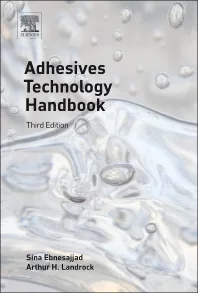Architect Survey Highlights ‘Green' Product Attributes, Overseas Growth Markets
Architects
say durability is the most important attribute for a “green” building product,
according to an industry survey commissioned by PPG Industries.

Architects say durability is the most important attribute for a “green” building product, according to an industry survey commissioned by PPG Industries. It was followed by ENERGY STAR compliance, life-cycle assessment, no- or low-volatile organic compound (VOC) content and the ability to source products regionally.
Durability also is the most important attribute among building products in general, ranking slightly ahead of price. Product warranties, features and technical support also were named by approximately two in five architects.
James J. Bogdan, PPG Manager, green building initiatives, for the company’s construction market team, said he was not surprised that architects consider durability a key sustainability factor. “We hear a lot of dialogue in the architect-engineer community about committing to a ‘century of ownership’ concept that encompasses a building’s design as well as its construction and operational lifetime. When you consider those factors, it’s no wonder that durability is at the top of the list when it comes to defining what makes a product good and what makes a product green,” he said.
The study also revealed that, among building-product manufacturers, Armstrong (37 percent) and USG (35 percent) are perceived most often as green building leaders. Kohler, Owens-Corning, DuPont, Johnson Controls and PPG are among other companies identified as green leaders by more than 20 percent of those surveyed. PPG was recognized as the green, or sustainability, leader in the glass and metal coatings categories by margins of 33 percent and 8 percent respectively over the nearest competitors.
About 30 percent of respondents’ firms work on projects outside the United States.The fastest-growing overseas markets are India and Dubai, which grew by 60 percent and 44 percent respectively since PPG conducted the same survey in 2006. China is down by 29 percent from 2006 but remains the second-largest source of foreign commissions, landing between Canada and Mexico. Firms with more than 100 people were the most likely to conduct business outside the United States.
Architects said their most important sources of product information are manufacturers’ websites (76 percent) and Internet searches (59 percent). Nevertheless, responses showed that traditional resources such as manufacturers’ sales representatives (54 percent) and technical binders (46 percent) remain popular.
The online survey was completed by 612 qualified architects, producing ±3.9 percent accuracy at the 95-percent confidence level. It reached a representative cross-section of U.S. architects by firm size, geography, job title and years of experience.

Architects say durability is the most important attribute for a “green” building product, according to an industry survey commissioned by PPG Industries. It was followed by ENERGY STAR compliance, life-cycle assessment, no- or low-volatile organic compound (VOC) content and the ability to source products regionally.
Durability also is the most important attribute among building products in general, ranking slightly ahead of price. Product warranties, features and technical support also were named by approximately two in five architects.
James J. Bogdan, PPG Manager, green building initiatives, for the company’s construction market team, said he was not surprised that architects consider durability a key sustainability factor. “We hear a lot of dialogue in the architect-engineer community about committing to a ‘century of ownership’ concept that encompasses a building’s design as well as its construction and operational lifetime. When you consider those factors, it’s no wonder that durability is at the top of the list when it comes to defining what makes a product good and what makes a product green,” he said.
The study also revealed that, among building-product manufacturers, Armstrong (37 percent) and USG (35 percent) are perceived most often as green building leaders. Kohler, Owens-Corning, DuPont, Johnson Controls and PPG are among other companies identified as green leaders by more than 20 percent of those surveyed. PPG was recognized as the green, or sustainability, leader in the glass and metal coatings categories by margins of 33 percent and 8 percent respectively over the nearest competitors.
About 30 percent of respondents’ firms work on projects outside the United States.The fastest-growing overseas markets are India and Dubai, which grew by 60 percent and 44 percent respectively since PPG conducted the same survey in 2006. China is down by 29 percent from 2006 but remains the second-largest source of foreign commissions, landing between Canada and Mexico. Firms with more than 100 people were the most likely to conduct business outside the United States.
Architects said their most important sources of product information are manufacturers’ websites (76 percent) and Internet searches (59 percent). Nevertheless, responses showed that traditional resources such as manufacturers’ sales representatives (54 percent) and technical binders (46 percent) remain popular.
The online survey was completed by 612 qualified architects, producing ±3.9 percent accuracy at the 95-percent confidence level. It reached a representative cross-section of U.S. architects by firm size, geography, job title and years of experience.
Looking for a reprint of this article?
From high-res PDFs to custom plaques, order your copy today!




